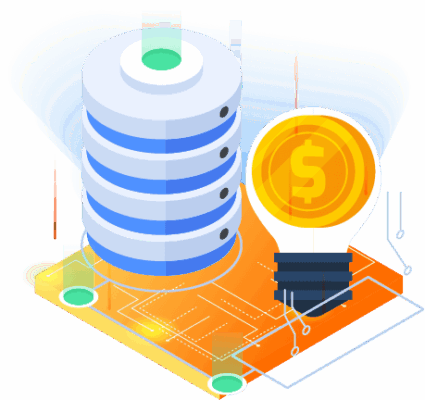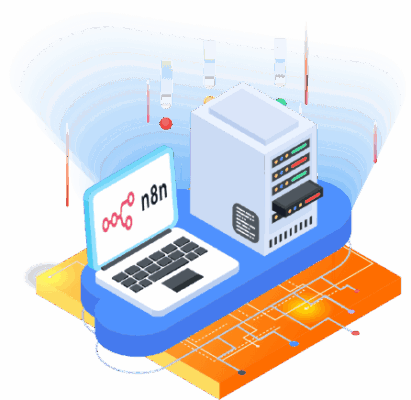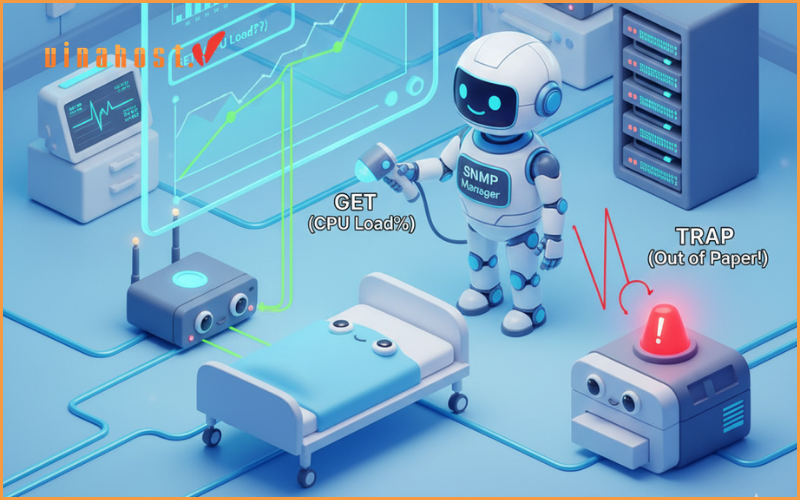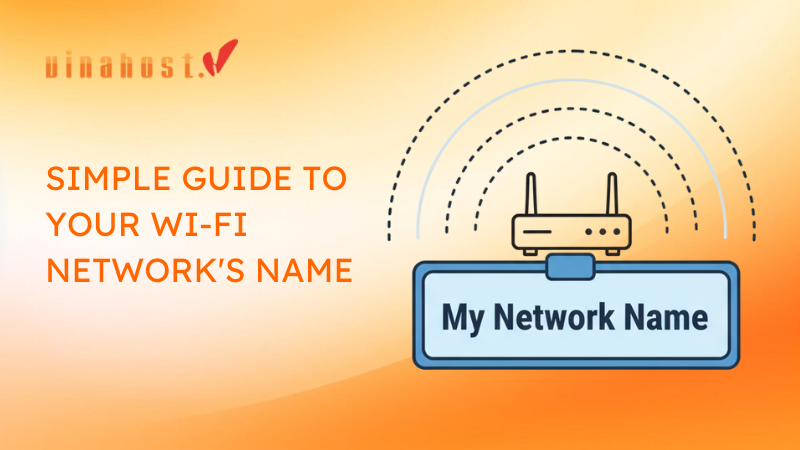What is Domain squatting? Domain squatting, also known as cybersquatting, is an act in which individuals register domain names with the intention of taking advantage of another person’s brand name or legal ownership rights to gain benefits. This phenomenon has become a highly controversial issue in the Internet age, leaving businesses and individuals facing significant challenges in establishing and protecting their identities online. Let’s join VinaHost to learn information about domain squatting through the following article.
1. What is Domain Squatting?
Domain squatting, also known as cybersquatting, is the act of registering a domain name with the intention of reselling it to the rightful owner at a higher price.
This behavior has existed since the early days of the Internet and is still common. According to the latest report from WIPO, in 2021 there were 3,076 domain name disputes, an increase of 5% compared to 2020. Although many disputes are resolved through mediation or arbitration, a significant number still go to arbitration.
A major challenge in dealing with domain squatting is proving that the practice violates intellectual property rights, as domain name squatters often register domains that are similar to well-known brands but are not the owners.
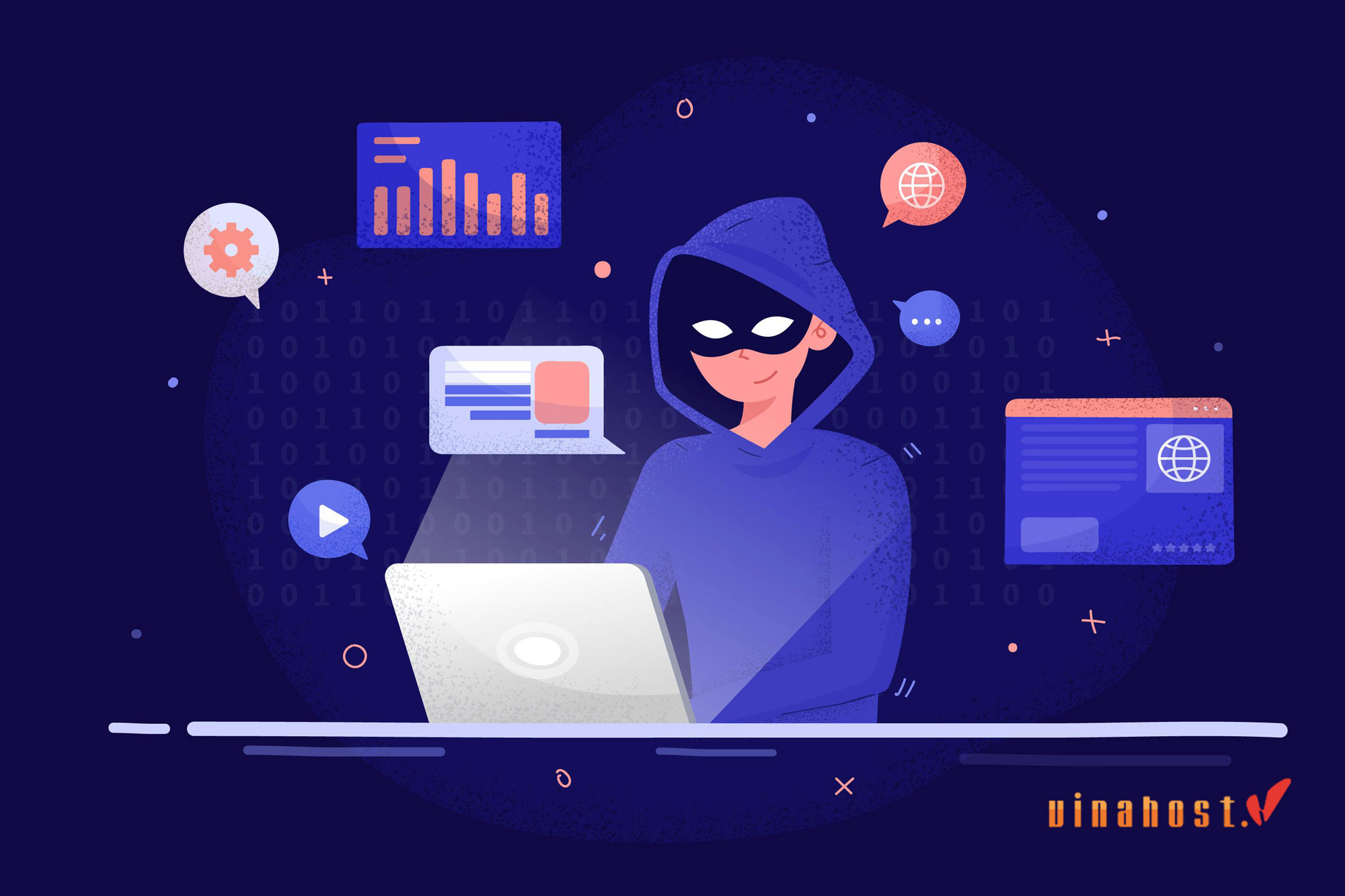
For example, a domain squatter might register it as paypalsucks.com and then sell it to PayPal at a higher price. This domain name does not violate PayPal’s trademark because it is not identical. These guys also often register domain names that closely resemble popular words or phrases to attract visitors to their sites. For example, they could sign up for Tisla.com to attract people who mistakenly typed Tesla.com into their browser.
While these practices may not be illegal, they can cause serious business problems. These domain name squatters take advantage of this to redirect traffic away from legitimate websites, causing loss of revenue and customers for the official domain name companies.
Also Read: What is Domain & How It Impacts Your Online Presence
2. Domain Squatting Examples
In the history of the Internet, there have been many prominent cases of domain name hijacking that have caused controversy. For example, the domain name “wallstreet.com” was acquired by a third party and used to redirect users to a non-financial website.
Google has also faced domain hijacking attempts, but they quickly resolved the issue. These examples clearly show the motivations behind domain name squatting practices. Often these individuals are looking to make money by redirecting Internet traffic or engaging in domain trading to sell them at a higher price.
In some cases, domain name hijacking is used as a tool to intimidate or harass legitimate domain name owners. This highlights the importance of protecting domain name rights on the Internet and calls attention to the need for vigilance and awareness on the part of domain name owners.
When developing a strategy to combat domain squatting, it is important to understand it and other tactics that may be used by those engaging in illegal activities involving internet domains. Studying cases of misappropriation can provide valuable lessons and ideas for strengthening security measures around domain names to prevent misuse.
Also read: What is Domain Backorder? | Everything you need to know
3. How does domain squatting work?
Although both domain flipping and domain squatting involve buying and selling domain names for profit, they have different legal implications. Domain switching is a legitimate strategy in which domain names are acquired based on market potential and demand, then resold at a higher price after content and marketing optimization.
In contrast, domain squatting involves maliciously registering domain names, often targeting popular or trademarked names, to create an opportunity or cause unfair profit. Opportunistic domain name hijacking typically involves registering popular domain names with the intention of selling them at a higher price to the owner of the trademark.
For example, a typical domain name can cost anywhere from $10 to $15 per year, while hackers can demand thousands of dollars for these domains. Common acts of opportunistic domain name hijacking include:
- Domain squatting: Registering an expiring domain name to prevent the original owner from renewing it, then offering them to return the domain name at a higher fee.
- Name grabbing: Acquiring domain names related to famous individuals or organizations to profit from traffic to these websites.
- Reverse domain squatting: Intentionally making unsubstantiated allegations that the current owner of the domain name is misusing it, to force them to transfer ownership of the domain name which is not reasonable.
On the contrary, malicious domain squatters often target domains that resemble popular websites to spread malware and carry out fraudulent activities.
In 2022, the World Intellectual Property Organization (WIPO) recorded more than 7,000 cyber misappropriation cases, which is the highest level in history. Some common types of domain squatting attacks include:
- Typosquatting (URL hijacking): Registering domain names with spelling errors of legitimate websites to trick users into visiting fraudulent websites. For example, a user might be lured to a domain name like amozon.com, which is similar to the legitimate website amazon.com.
- Homophone attack: This technique exploits the sound similarity between characters or letters in the International Domain Name (IDN) system. Hijackers register domain names that appear similar to the target domain but use characters from different languages.
- Homophone squatting: This method takes advantage of domain names with similar sounds to trick users into accessing malicious websites. The use of homonyms is increasingly common with the advent of voice-based search systems such as Google Voice Search and Cortana.
- Top-Level Domain (TLD) Hijacking: A squatter purchases a domain name with the same name as an existing domain but with a different extension. For example, they could register example.co to impersonate example.com.
- Squatting Homonym Matching: This involves adding a specific keyword to a legitimate domain name, for example onlineshopnamepayment.com, to fool users into believing they are visiting a payment page official.
4. Types of Domain Squatting
There are several types of domain squatting, each carrying its own set of risks.
4.1. Typosquatting
Typosquatting occurs when a squatter registers a domain name similar to a well-known brand but with a typographical error. For instance, they might register goggle.com instead of google.com.
Domain squatters engage in typosquatting because they anticipate that people will frequently mistype a domain name in their browser. When this occurs, the user is redirected to the squatter’s website instead of the intended one.
Such actions can potentially damage a company’s reputation by promoting their site on a popular business platform, such as Facebook, which may result in decreased traffic and clients for the targeted firm. Additionally, if the squatter’s site contains harmful content or tools, it could further harm the company’s reputation.
4.2. Domain Kiting
Domain kiting involves a domain squatter registering a domain name, allowing it to expire, and then re-registering it repeatedly. This cycle continues with the squatter paying only the initial registration fee each time.
Domain squatters employ this tactic to maintain ownership of a domain name under their registration without incurring the full registration cost. For businesses, this practice poses challenges as it prevents them from securing the domain name for their own use.
4.3. Cybersquatting
Cybersquatting occurs when a domain squatter registers a domain name that closely resembles a well-known brand or trademark, such as registering teslacars.com. Domain squatters engage in this practice with the expectation that the targeted company will seek to purchase the domain from them at a significant markup.
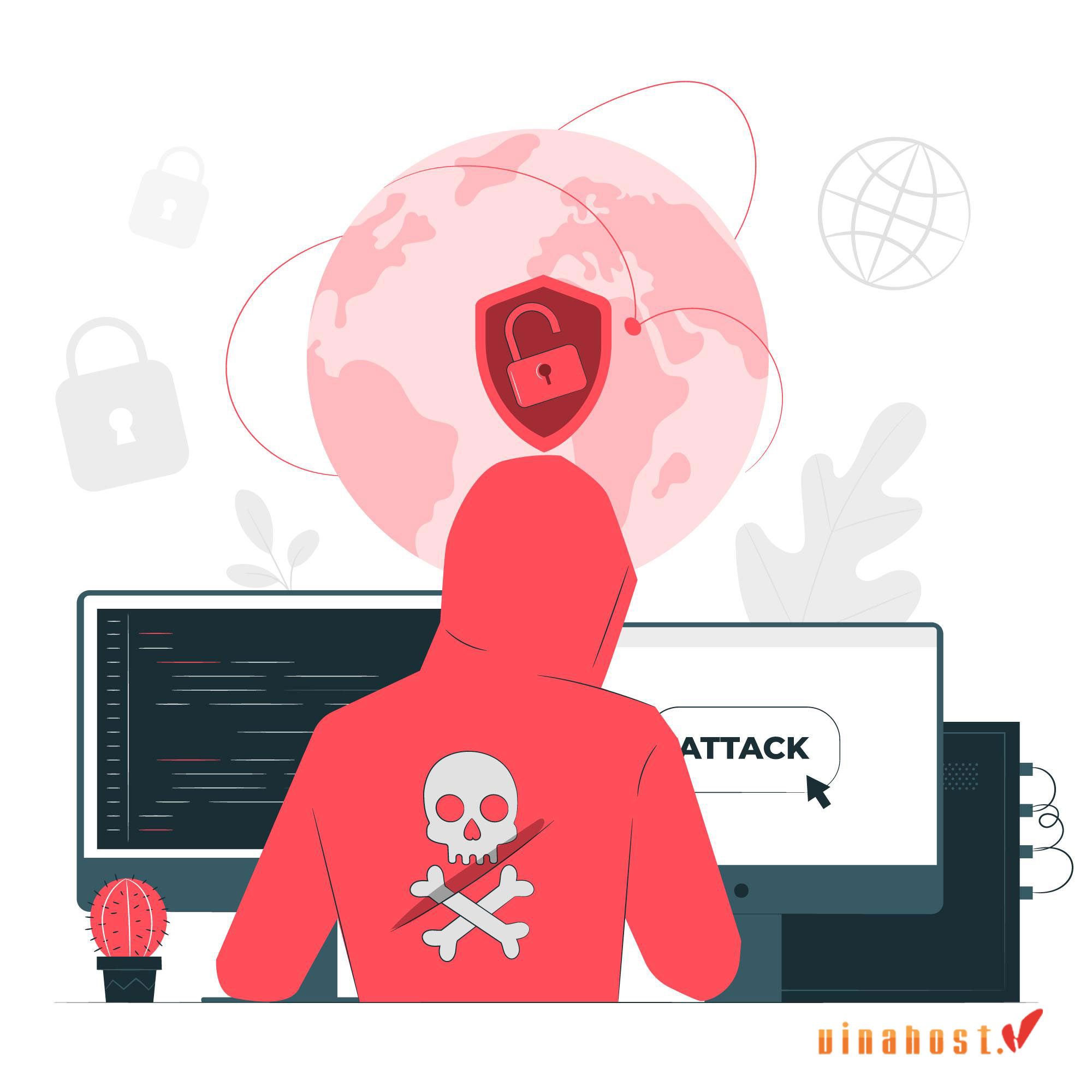
Also Read: What is Domain Privacy? | Do you need Domain Privacy?
5. The Impact of Domain Squatting
Domain name hijacking can have a major impact on both businesses and individuals. First, it can confuse consumers, causing them to accidentally visit the squatter’s website instead of the official website, resulting in lost traffic and sales for the target business. This can damage a brand’s reputation if the squatter’s website contains misleading or harmful information.
Financially, domain name hijacking can create expensive costs for businesses as they are forced to buy back their domain names at a higher price or have to engage in legal disputes to regain control. Furthermore, it undermines trust and reliability in online transactions, especially when hijackers use deceptive tactics such as phishing or spreading malware through fake websites.
In short, the impact of domain name hijacking is more than just a mere effort, it affects a business’s bottom line and its ability to maintain a secure online presence. Implementing proactive monitoring and prevention measures is important to minimize these risks and protect against the negative effects of these online activities.
Also Read: What is a root domain? | Why does a root domain matter?
6. How to Prevent Domain Squatting
Protecting your brand or business from domain name hijacking is important. Here are some key steps to protect your domain:
6.1. Register your domain name early!
As soon as you decide on a domain name, register it immediately. This helps reduce the risk of someone else taking over the domain name. Secure your domain name before you announce your brand or business. This way, you reduce the risk of someone else registering the domain name before you.
6.2. Register Domains From an Accredited Domain Registrar
Choosing a domain name registrar accredited by the Internet Corporation for Assigned Names and Numbers (ICANN) is important to ensure security and avoid fraud.
VinaHost, an ICANN accredited registrar, implements strict verification processes when registering domain names and offers additional security features such as domain transfer locks.
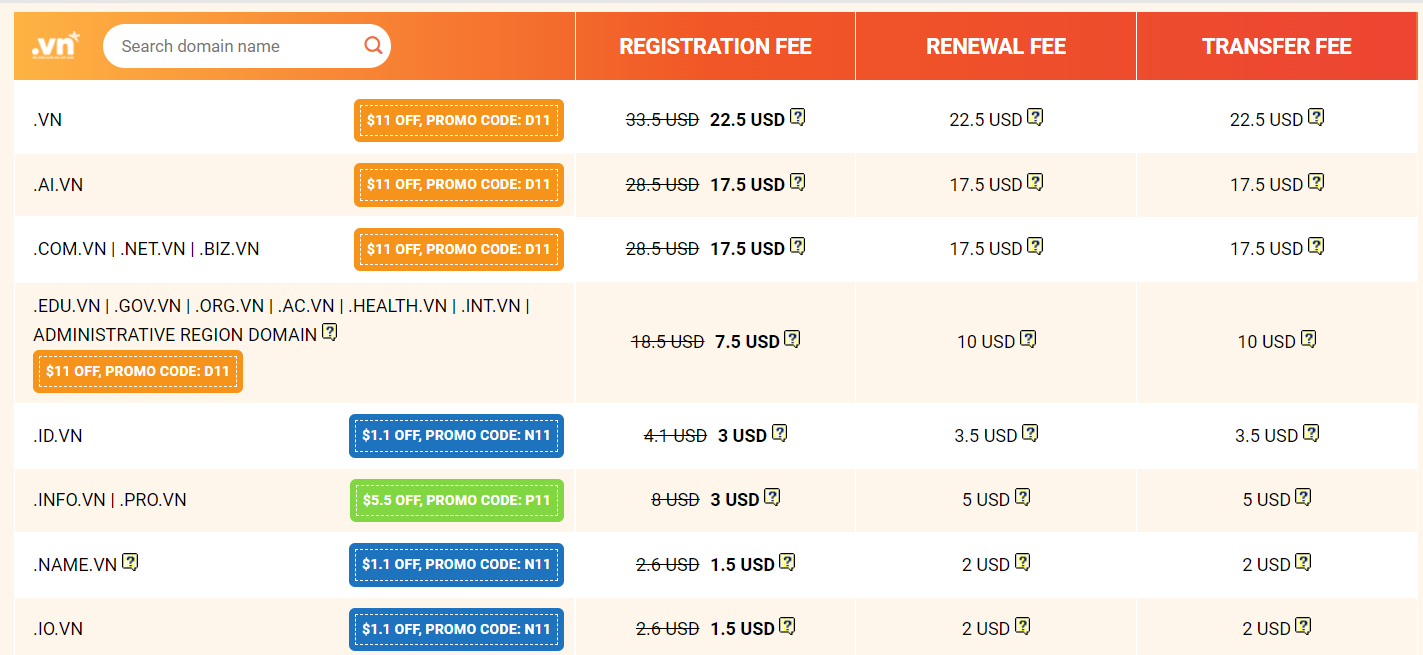
6.3. Use domain protection services
Domain name protection services are useful tools to protect your brand or business from domain name squatters. These services typically include domain monitoring, domain blocking, and domain recovery. Some providers also support retrieving domain names that have been hijacked.
6.4. Trademark Your Brand Name
If your brand or business has a registered trademark, you can take legal action against domain squatters who violate your trademark.
To register a trademark, you need to apply to the United States Patent and Trademark Office or the equivalent office in your country. Additionally, consulting with a trademark attorney can help you understand the process and increase your chances of success.
6.5. Secure variations of your domain name
A domain extension, also known as a top-level domain (TLD), is a suffix at the end of a domain name, such as .com, .net and .inc. When you register a domain name, you can choose from many different TLDs. In addition to popular TLDs such as .com, .net, new TLDs such as .blog, .io and .ai have also appeared in recent years.
To prevent domain squatters from registering identical domain names, you should protect your domain name with multiple TLD types. For example, if your domain name is example.com, you can register both example.inc and example.io.
6.6. Enable automatic domain renewal
To avoid losing control of your domain name if you fail to renew it in a timely manner, it is important to enable the auto-renew service. This ensures that the domain name will be automatically renewed before it expires, keeping you in control of your domain name.
Also Read: The Value of Domain Names: Choosing the Right Domain for Your Website
7. FAQs
7.1. Can I prevent domain squatting altogether?
To minimize the risk of domain name hijacking, there are some simple steps you can take:
- Register early: Register your domain name as soon as possible, especially before going public with your brand.
- Monitoring and protection: Regularly check domain name databases and trademark offices to detect invalid registrations early. Consider using domain name protection services.
- Use multiple TLDs: Protect your brand by registering multiple domain extensions (TLDs).
- Register a Trademark: Register a trademark for your brand to increase legal protection against domain name hijacking.
- Legal readiness: If necessary, be prepared to take legal action to protect your domain ownership.
These measures will help you improve your ability to manage and protect your brand online, thereby preventing risks related to domain name hijacking.
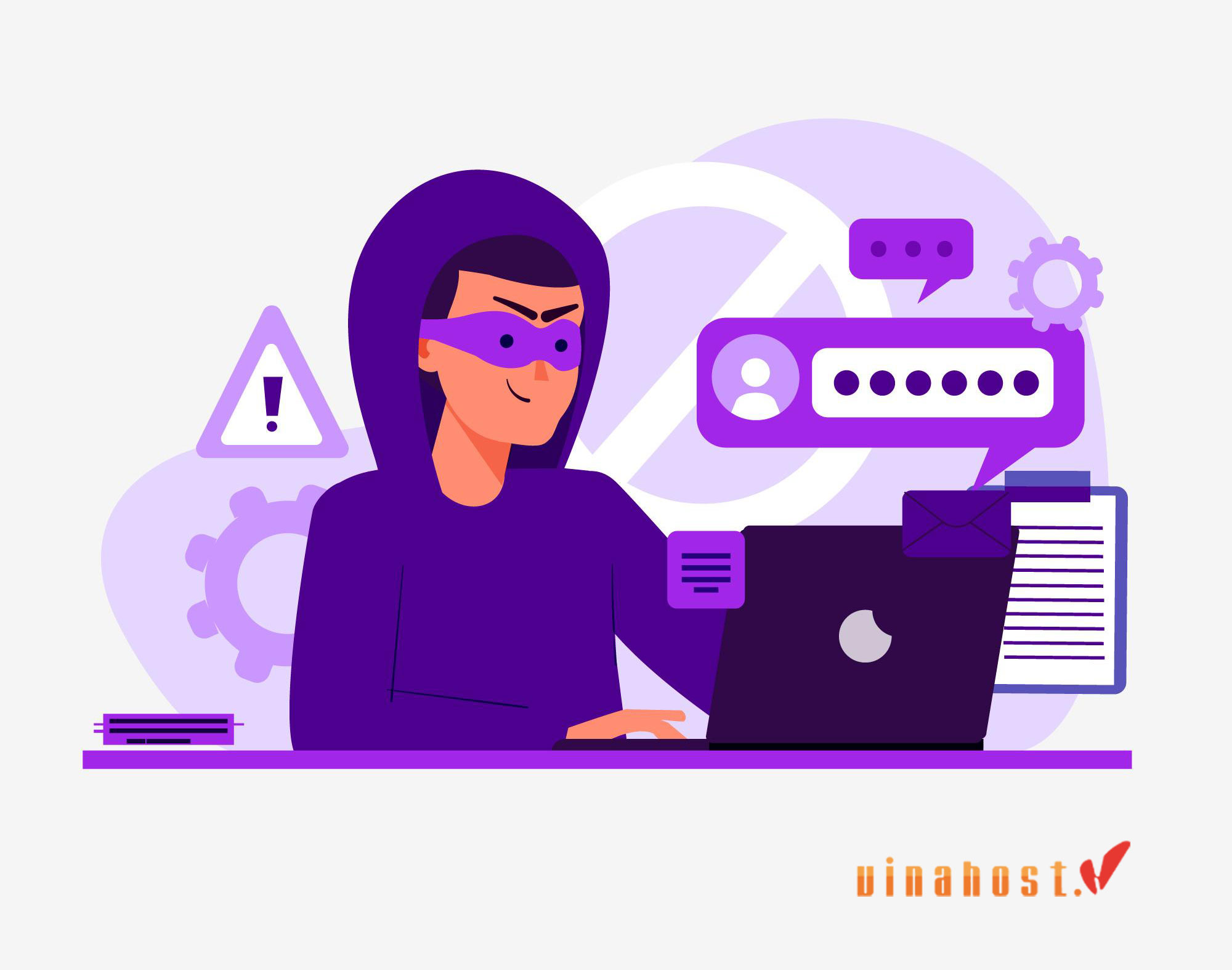
7.2. What Is the Difference Between Domain Squatting and Domain Investing?
Domain squatting and domain investing differ mainly in their purposes and motives. Domain squatting involves registering domain names with the intention of preventing others from reusing them, often with malicious or opportunistic motives. In contrast, domain name investing focuses on buying domain names that are considered low priced and reselling them for a profit, taking advantage of demand and market trends.
Also Read: What are expired Domains? | How to check domain expiration?
7.3. How much does it cost to fight a domain squatter?
The cost of fighting a domain name squatter can vary depending on many factors, including the complexity of the case, the scope of rights, and whether legal methods such as litigation are used. Here are some potential costs involved:
- Attorney fees: Hiring a lawyer specializing in intellectual property and domain name disputes is necessary. These costs can range from a few thousand dollars for simple cases to tens of thousands of dollars for complex cases.
- Court fees: If the case goes to court, legal fees such as court filing fees, witness fees or other costs may be added.
- Arbitration fees: If arbitration is used (e.g., through ICANN’s Uniform Domain Name Dispute Resolution Policy), filing fees typically range from a few hundred dollars to thousands of dollars, depending on the arbitration provider.
- Investigation costs: Costs may be required to collect evidence of domain name registration or malicious use.
- Opportunity Cost: Consider the cost of time and resources your organization has to spend to resolve a dispute, which can also be an important cost factor.
- Uncertainty of outcome: It should be noted that the outcome of these disputes may be uncertain and there is no guarantee that costs will be recovered even if successful.
In short, costs can vary widely, and you should evaluate the potential benefits of protecting your valuable domain name or trademark against the costs of legal action. Consulting with an attorney who specializes in intellectual property and domain name disputes can help you get a clearer estimate that is more tailored to your specific situation.
7.4. Is registering a domain name similar to an existing brand always illegal?
Registering a domain name similar to an existing trademark is not always illegal. This depends on many factors:
- Purpose: If the domain name registration has the purpose of defrauding or confusing consumers (for example, to misappropriate assets online), it may violate the law.
- Trademark Infringement: If a domain name infringes on a registered trademark, especially if it causes confusion as to the origin of goods or services, it may be considered infringement.
- Fair Use: Use of a domain name for criticism, comment or comparison may be considered lawful, as long as there is no intent to deceive or cause confusion.
- Prior Use: If the registrant of the domain name was using it legally before the trademark was established, this may not be considered a violation of the law.
To determine the legality of a domain name registration, courts often consider these factors along with other factors that depend on the specific situation. If you have concerns about trademark infringement or other legal issues related to your domain name, you should seek specialized legal advice.
7.5. What should I do if I find a squatted domain name?
To resolve the issue of domain squatting, you can take the following steps:
- Assess the situation: First, evaluate whether the domain name will harm your brand or business. Determine whether use of this domain name violates your trademark rights, or would cause confusion or injury.
- Collect evidence: Next, collect evidence about the registration and use of this domain name. This may include screenshots of the website, contact information for the domain owner, and documents regarding the impact this will have on your business.
- Legal advice: Consult with a trademark or intellectual property attorney. They will help you evaluate the legal options available and the strength of your case.
- Domain name dispute resolution: Depending on each specific case, you can apply domain name dispute resolution mechanisms.
- Negotiation: If possible, try to negotiate with the domain owner to reach an agreement to protect your interests.
- Monitor and take action: Regularly monitor domain name usage and take appropriate action if necessary to prevent escalation or changes in domain name usage.
Taking these steps will help you effectively handle domain name hijacking issues and protect your online presence and brand reputation.
Also Read: What is Registry Lock? | Protect Domain with Registry Lock
8. Conclusion
So what is domain squatting? In summary, the issue of domain squatting remains a major challenge in the digital world, affecting both businesses, individuals and online consumers. With the continuous development of the Internet, the risks related to protecting domain names and brands from squatters are also increasing.
To minimize this risk and protect your online identity, it’s important to stay vigilant, exercise proactive registration, and take legal action. By staying informed and adopting effective prevention strategies, stakeholders can better manage the complex issue of domain ownership and protect their digital assets. Find out more articles at our Blog and don’t hesitate to contact us for support:
- Email: support@vinahost.vn
- Hotline: 1900 6046
- Livechat: https://livechat.vinahost.vn/chat.php
What is a Domain Registrar? | Function of a Domain Registrar
What is Transfer Domain? & How to Transfer a Domain?
 Tiếng Việt
Tiếng Việt English
English 简体中文
简体中文



























